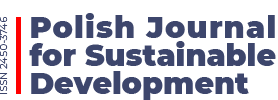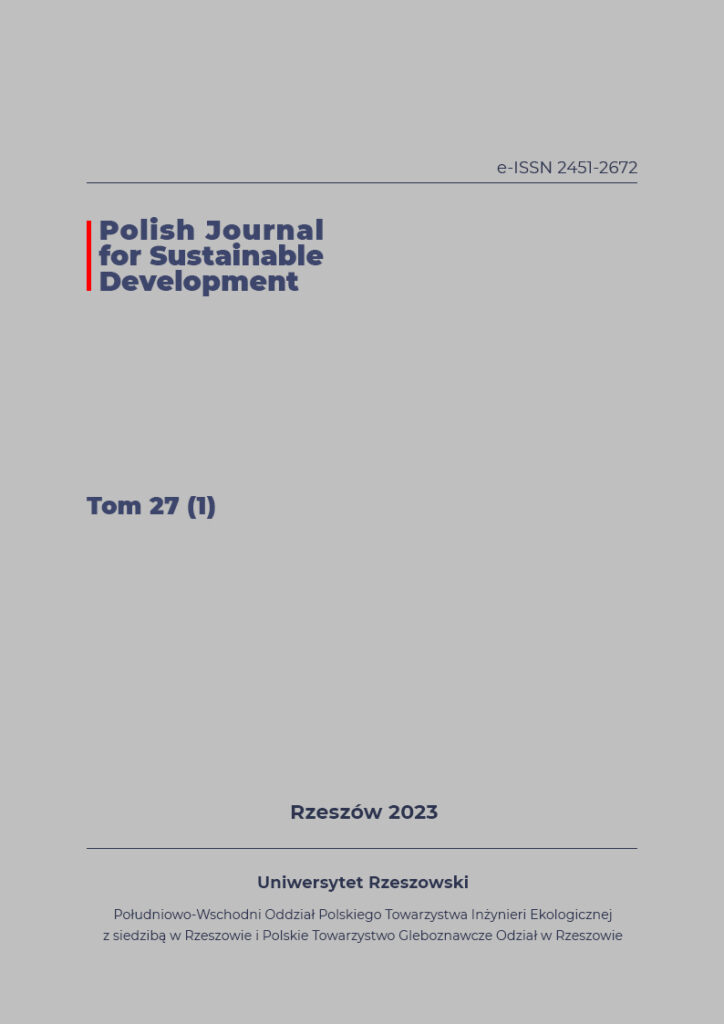Skala transportu zwierząt gospodarskich w Unii Europejskiej
DOI:
https://doi.org/10.15584/pjsd.2023.27.1.7Abstrakt
Polityka rolna oraz opłacalność produkcji sprzyjają przemieszczaniu zwierząt przeznaczanych nie tylko do uboju, ale także do tuczu czy opasu. Najwięksi producenci realizują przewozy zwierząt zarówno w obrocie wewnątrzunijnym, jak i do krajów trzecich. Transport zwierząt, szczególnie długodystansowy, wiąże się ze znacznymi kosztami środowiskowymi. Natomiast transport tusz czy mięsa jest bardziej korzystny z punktu widzenia jego wpływu na środowisko i zmiany klimatyczne. Wydaje się, że zmiany w tym obszarze mogą być przyspieszone presją wynikającą z wyborów konsumenckich.
Downloads
Bibliografia
Baltussen W., Nuhoff-Isakhanyan G., van Wagenberg C. (2017). Transport of live animals versus meat: case studies of spent hens and lambs, using newly developed calculation model. (No. 2017-065). Wageningen Economic Research. 32 pp. ISBN 978-94-6343-645-8.
Baltussen W.H.M., Spoolder H.A.M., Lambooij E., Backus G.B.C. (2009). Sustainable production: transporting animals or meat?. [dok. Elektr. https://library.wur.nl/WebQuery/wurpubs/fulltext/11502. Data wejścia 10.05.2023]
EC (2021). EU agricultural outlook for markets, income and environment, 2021-2031. European Commission, DG Agriculture and Rural Development, Brussels. [dok. Elektr.: https://agriculture.ec.europa.eu/system/files/2023-01/agricultural-outlook-2021-report_en_0.pdf. Data wejścia 12.05.2023].
Eurostat. 2021. Agri-environmental indicator - livestock patterns. [dok. elektr. Agrienvironmental indicator - livestock patterns - Statistics Explained (europa.eu). Data wejścia 30.04.2023]
Eurostat. 2023. [baza danych statystycznych https://ec.europa.eu/eurostat/databrowser/view/APRO_MT_LSCATL/default/table?lang=enData wejścia 15.05.2023].
Frisk M., Jonsson A., Sellman S., Flisberg P., Rönnqvist M., Wennergren U. 2018. Route optimization as an instrument to improve animal welfare and economics in pre-slaughter logistics. PLoS One, 13(3), e0193223. doi:10.1371/journal.pone.0193223.
Håkansson N., Flisberg P., Algers B., Jonsson A., Rönnqvist M., Wennergren U. 2016. Improvement of animal welfare by strategic analysis and logistic optimization of animal slaughter transportation. Animal welfare, 25(2), 255-263.
Komunikat Komisji Do Parlamentu Europejskiego, Rady Europejskiej, Rady, Komitetu Ekonomiczno-Społecznego I Komitetu Regionów Europejski Zielony Ład. Bruksela, 2019 r. COM 2019. 640 final [dok. elektr.: https://eur-lex.europa.eu/resource.html?uri=cellar:b828d165-1c22-11ea-8c1f-01aa75ed71a1.0016.02/DOC_1&format=PDF. Data wejścia 25.03.2020].
Massot A. et al. 2021. Research for ANIT Committee – Patterns of livestock transport in the EU and to third countries, European Parliament, Policy Department for Structural and Cohesion Policies, Brussels. [dok. Elektr.: https://www.europarl.europa.eu/RegData/etudes/IDAN/2020/652222/IPOL_IDA(2020)652222_EN.pdf. Data wejścia 26.04.2023].
Overview report Welfare of Animals Exported by Road. 2020. DG Health and Food Safety. Brussels. [dok. Elektr.: https://food.ec.europa.eu/system/files/2020-06/reg-com_ahw_20200618_road-exp_eur.pdf. Data wejścia 10.05.2023].
Rozporządzenie Parlamentu Europejskiego i Rady (UE) 2016/429 z dnia 9 marca 2016 r. w sprawie przenośnych chorób zwierząt oraz zmieniające i uchylające niektóre akty w dziedzinie zdrowia zwierząt („Prawo o zdrowiu zwierząt”). Dz. U. L 84 z 31.3.2016.
Rozporządzenie Rady (WE) nr 1/2005 z dnia 22 grudnia 2004 r. w sprawie ochrony zwierząt podczas transportu i związanych z tym działań. Dz.U. L 3 z 5.1.2005.
Transport of live animals in the EU: challenges and opportunities 2023. Review 03. European Court and Auditors. [dok. elektr. https://www.eca.europa.eu/Lists/ECADocuments/RV-2023-03/RV-2023-03_EN.pdf. Data wejścia 10.05.2023].
Pobrania
Opublikowane
Numer
Dział
Licencja
Prawa autorskie (c) 2023 Polish Journal for Sustainable Development

Utwór dostępny jest na licencji Creative Commons Uznanie autorstwa – Użycie niekomercyjne – Bez utworów zależnych 4.0 Międzynarodowe.


